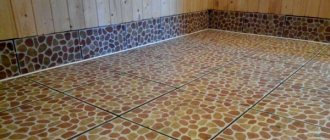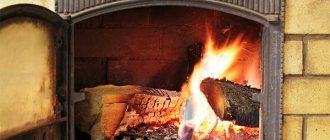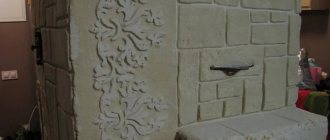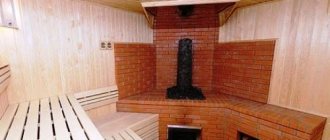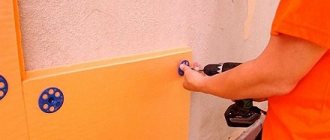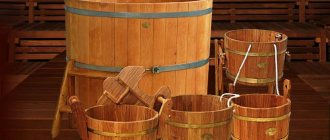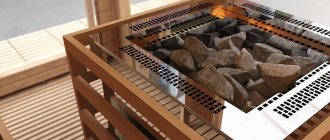Many private homes have a stove or fireplace that can be decorated with tiles, but not every tile will be suitable for this purpose. Cladding a stove with tiles puts forward a number of requirements both for the technology of facing work and for the material.
We will figure out which tiles are suitable for lining stoves in a house, country house or bathhouse within the scope of this article. Before you start choosing tiles, you should figure out what kind there is, what properties it has, and determine which one is best to use so that it is reliable and beautiful.
Tiles for cladding stoves and fireplaces
Preparation for lining the stove with ceramic tiles
Before purchasing and preparing materials for work, it is necessary to take into account the type of main structure and operating conditions:
- single-circuit brick kilns are characterized by strong surface heating, so the facing material and mortar must be temperature resistant. Devices of this type are used in rooms with high humidity and temperature fluctuations (baths, saunas), which also affects the careful selection of tiles and adhesive composition;
- double-circuit brick devices. The external contour of the furnace, in contact with the facing material, has a lower degree of heating than the internal one, and is characterized by the absence of local overheating points. Such characteristics make it possible to install one type of tile using one type of mortar;
- ovens with a metal surface. Furnace finishing is complicated by differences in the heating and cooling rates of metal and tiles, which can lead to deformation or destruction of the lining. Installation of lamellas is possible in a “dry” way - on a special frame.
Before starting work, calculate the total surface area of the heating device, including horizontal and vertical planes.
Take measurements of the tiles and determine the number of elements required for cladding; be sure to add 10-15% to the result obtained - the reserve may be needed in case of damage to the material during installation or to replace a surface area that has become unusable during operation.
Also decide on the installation method: straight rows (with exact alignment of the sides of the elements), diagonally, offset (type of brickwork).
The use of solid fuel for the stove requires the presence of tiles that will withstand temperatures up to 1600 ⁰; wood combustion occurs at a temperature of 700-800 ⁰, which significantly expands the choice of facing material.
Advantages of a brick casing
Why is it worth making a brick casing around the stove? If you still doubt the need for such modernization, we suggest that you familiarize yourself with the following advantages of brickwork:
- heated brick retains heat for a longer time than metal;
- for a steam room, a heated brick or stone is optimal because it produces more humidified steam;
- the casing around the stove will protect you from burns if you accidentally touch its surface and is good for a home where children live;
- a brick-lined stove is much more economical, because it will require less fuel to maintain heat;
- brick has more possibilities for decoration and looks more aesthetically pleasing in the room.
A brick-lined stove is a guarantee of warmth and comfort
Materials and necessary tools
Tile selection
The material used for finishing stoves must have the following characteristics:
- resistance to mechanical loads, strength;
- wear resistance;
- heat resistance;
- the thickness of the elements must be at least 8 mm to prevent deformation of the coating;
- environmental friendliness - during heating, toxic substances will evaporate into the surrounding space;
- moisture resistance - the water absorption coefficient should be less than 3%.
Types of tiles used for finishing stoves:
- clinker - in the production process they use the method of pressing and firing a mixture of several types of clay, fireclay and dyes. The products are durable and come in a wide range of beige shades;
- porcelain stoneware - made by pressing under high pressure and temperature of a complex composition (clay, sand, granite chips, metal salts, marble). The material is highly resistant to mechanical and thermal loads;
- terracotta - the basis of the tile is clay. The surface of the lamellas is not susceptible to scratches, the tiles are impact-resistant and can withstand temperature changes, which makes it advisable to use them for lining stoves in cold rooms;
- majolica – terracotta products covered with glaze. Used to implement unusual design solutions with elements of luxury. For the same purposes, tiles are used for finishing - high-strength, fire-resistant clay tiles, which are quite expensive.
Artificial and natural stones are in demand as facing materials: marble, sandstone, granite
Pay attention to the appearance of the products: surfaces must be the same color and not have chips or cracks. The product certificate must include a note indicating the permissibility of operation at high temperatures.
Selection of adhesive composition
Cement mixtures
They consist of highly refractory cement, sand with the addition of mineral and synthetic additives that provide the necessary thermal resistance characteristics. Dry mixtures can be purchased on the building materials market; if desired, you can make your own solution:
- take clay or fireclay, refractory cement, sand in a ratio of 1:1:3, respectively;
- displace cement and sand;
- in a separate container, dilute the clay with a small amount of water and
- add to dry mixture;
- Mix the glue thoroughly until a homogeneous mass is obtained. If necessary, add a little more liquid.
Fireclay mixtures
They have high heat resistance and are used for laying tiles on the internal and external surfaces of the stove.
Terracotta
The composition includes fireclay dust and astringent additives. The solution has high moisture resistance and can withstand heating up to 400⁰. Glue can be purchased ready-made or made: mix 2 parts of fireclay powder with 1 part of koalin clay and pour the dry mixture into a container of water, stir until smooth.
Fireproof adhesives
They are made on the basis of potassium or sodium silicate with the addition of clay and modifying additives. Maintain operational properties at temperatures of 1200-1650 ⁰С
Adhesive mastics
Silicate and phosphate compounds with mineral additives and fillers. They are moisture resistant and can withstand heating up to 1400 ⁰C.
Experts recommend choosing a cement mortar that contains salt: the component is capable of accumulating existing moisture.
Auxiliary materials
To complete the work, you will need a metal mesh, screws or dowels for fastening it, plaster to level the base, heat-resistant adhesive, plastic separating crosses or drywall cut into strips, grout, and primer.
Tools for work
- straight, serrated metal and rubber spatulas;
- tile cutter;
- metal brush;
- hammer drill or chisel;
- rubber mallet;
- level, vertical plumb line;
- construction mixer;
- container for mixing the solution.
Color spectrum
The color of tiles for stoves and fireplaces should be matched to the overall design of the room. Clinker plates are presented mainly in natural shades - from pure white to chocolate. The range of shades of porcelain stoneware is simply huge. With its help you can create a designer unique finish for a heating unit.
If it is necessary to emphasize the naturalness of the hearth, to bring the structure as close as possible to a rustic stove, choose terracotta of a natural clay shade for cladding. Marble plates, majolica, and tiled elements are produced mainly in light colors, complemented by painting and various patterns.
Start of main work
Preparing the base
- remove the old paint layer with a wire brush. If tiles were used as cladding, remove them with a chisel, starting from the bottom of the stove and moving upwards;
- deepen the seams of the brickwork to ensure high-quality adhesion of the mortar by 5-10 mm;
- secure the construction mesh with slight tension along the plane of the surface. Fix with dowels or self-tapping screws so that the caps protrude 10-12 mm above the wall.
Screw the fasteners not into the masonry joints, but into the brick - this will make the structure more durable
Applying plaster
Treat the base with ready-made plaster or prepare it yourself by mixing 0.2 parts sand with 3 parts clay and 1 part cement. If the surface has significant depressions (up to 10 mm), apply the solution in two approaches. Check the evenness of the surface with a level.
After the plaster has dried, apply a heat-resistant deep penetration primer.
Before leveling the walls, heat the oven and place the solution on the base, the temperature of which is 30-35 ⁰C.
How to cover a stove so it doesn't fall off?
- make markings using a plumb line and level for the desired laying pattern, take into account that work should begin from any lower corner;
- spread the adhesive with a notched trowel on the back surface of the tile or apply it to the stove;
- press the element to the base, lightly tap it with a mallet;
- lay the remaining tiles, inserting crosses or plasterboard between adjacent lamellas;
- After finishing the work, leave the decorative coating to dry for 1-2 days.
It is not advisable to make more than 3 rows at a time: for better setting of the solution, take hour-long breaks during the laying process.
Working with seams
To mask the seams, you can use the remains of the solution used for installation or a special, heat-resistant composition of various colors:
- Using a rubber spatula, spread the mixture at the joints and level it;
- inspect the seams and, if necessary, grout again to fill all voids;
- Use a damp sponge to carefully remove excess grout; do the final cleaning of the surface of the tiles after 2-3 hours, when the grout has hardened slightly.
You can start using the oven after 6-8 days.
Cleaning masonry from mortar
The appearance of the masonry is also important and in order for it to look neat, you should take care of it during the construction of the casing. To do this, every few rows of not yet hardened drops of mortar from the bricks need to be cleaned off and wiped with a damp cloth.
If, however, in some places the drips have not been removed in a timely manner, then after completing the work, you can walk over the surface of the casing with a grinder with a grinding attachment or a stiff brush. Then, if the brick was not chosen to be decorative, plaster or whitewash is performed. It is recommended to wait at least 24 hours before starting finishing work.
You should start heating the stove no earlier than two weeks later; it is forbidden to try the stove before, otherwise insufficiently dried seams may crack, so all work should be carried out before the start of the planned operation.
As a first test, paper is burned in the firebox to check the draft.
Such a metal sauna stove, lined with brick in accordance with the rules described above, will provide soft, uniform heat, delighting its owners for many years.
Plastering the stove
How to cut tiles?
Before the trimming process, you need to make markings using a marker and ruler. Then fix the tile in the tile cutter so that the line is located under the cutting roller. To avoid chipping, lubricate the guide frame and roller with machine oil. When the lever is lowered, the tile breaks.
It is possible to cut with an angle grinder and a stone or steel disc coated with fine-grain diamond. The grinder should be operated at low speeds.
Plastering the surface is a simpler option for finishing a stove, but a ceramic coating has great advantages: a heating device with this design is easier to keep clean, and maintenance does not require the use of special detergents. Also, due to the properties of ceramics, the heat transfer of the furnace increases.
Tiles
This material was first invented by the ancient Babylonians, who also decorated stoves with it. Each tile is prepared individually from ceramics and then covered with glaze with a pre-selected pattern. As a result, you can get a very beautiful and unique stove that will look exquisite. It is believed that tiles produce the most environmentally friendly heat.
Covering a stove with tiles is very expensive and difficult, so you need to call special craftsmen for this, who are not so easy to find. But it’s worth it, because tiles have the highest heat transfer - 0.3 kW more than other materials.
Another disadvantage of the material is that you need to wait about a month until the solution completely dries and the oven is suitable for use. Thus, tiles are a choice only for those who want to stand out and create a unique interior.
Overview of methods
Stylistic directions
An indoor fireplace is a multifunctional unit. In addition to heating, it performs important aesthetic functions and is an original decoration of the central room. The finishing method and the shape of the tiles have a significant impact on the overall style of the room. You can make your fireplace attractive in a variety of ways. Using facing tiles you can decorate a stove or fireplace in the following styles:
- Under Gzhel. They use majolica and tiles of various shapes. A unique design is created individually for fireplaces in rustic, ethno, country styles;
- Imitation of brickwork. Decorating a fireplace in a modern style using brick-like tiles allows you to create a unique atmosphere. Minimalist design involves completely hiding the heat source behind a brick false wall;
- Under a stone. Modern production technologies make it possible to decorate the fireplace with tiles that imitate the texture of natural stone. This material looks great in the English style, chalet, Provence;
- Mirror tiles. The finish is suitable for modern interiors in Scandinavian style, minimalism, hi-tech. Elements with reflective glossy surfaces are often placed inside the hearth to create the effect of flame reflection;
- Panel. You can lay out an original panel over the hearth using porcelain stoneware, clinker tiles, or tiles. Patterns with natural motifs and original drawings will fit perfectly into the oriental, eco style.
Majolica
The ancient wall tiles, named after the island of Mallorca, are luxurious and original. It would not be wrong to describe majolica as an improved glazed terracotta with painting.
The thermal characteristics of majolica are equal to those of terracotta, that is, they are very high and are ideal for stoves. But the beauty and aesthetics of majolica is comparable only to tiles, and in most cases is not inferior to tiles. But the cost of majolica is quite affordable, unlike tiled finishes, and is only 30-35% more expensive than clinker tiles. Majolica with a pattern has a higher price. Drawings and paintings are burned into the glazed coating of the tiles, and can be smooth or with relief. The surfaces of the plates are matte, glossy and semi-matte – silky. Matte majolica is considered the most harmonious combination with wooden walls.
The sizes and shapes of majolica are varied, and the shapes of the slabs are available in both flat and corner, cornice, complex curved configurations, and rounded edges. A stove decorated with majolica is almost impossible to distinguish by eye from a tiled stove.
Dimensions
To make it convenient to work with tiles for lining stoves, their dimensions should not be too large. The optimal size is 25x25 cm, and the thickness is no more than 8 mm. For porcelain stoneware and clinker, no more than 6 mm is sufficient.
Such parameters will ensure sufficient thermal conductivity and strength of the entire installation. In addition, these sizes are much easier to work with.
Larger tiles can be made to order, for example from porcelain stoneware, but they are quite heavy and may not support their own weight, and also require more trimming and sizing. Tiles are also available in smaller sizes, for example, 10x10 cm.
However, it is used much less often for the same reasons as the large one - it is inconvenient to work with.
Design
The determining factor when choosing a stove cladding design is not the type of material, but the interior of the room in which it is located. A characteristic feature of the design of facing tiles specifically for stoves is the almost complete absence of geometric patterns.
It is not found in almost any style.
But the design of such products is replete with complex ornaments:
Floral patterns, characteristic of majolica or tiles, can be used in almost all styles - from classic to modern. Faience with its famous blue and white Gzhel color scheme would also be appropriate.
For a classic interior, you can choose porcelain stoneware; its possibilities are almost limitless. With it you can create entire paintings.
A modern interior does not imply too colorful decoration. Elegant monochromatic tiles with small splashes of decor would be more appropriate here. Various imitations of malachite and marble, as well as wood, will look good.
In a hunting lodge or country cottage, you can use natural stone. In order not to reduce the cost of the interior, you should not mix natural material with other types of finishing; it works well alone.
Real stoves are rarely found in techno or futurism style interiors. However, if elements of such design trends are still present, a plain tile would look good here.
In a country house, terracotta and clinker would be appropriate. Images of plants and flowers in the Khokhloma style will be especially good.
Terracotta
This material has been used for centuries, and therefore has good time-tested recommendations.
Terracotta is an unglazed ceramic tile that is easily recognized due to its characteristic red-brown hue. It is made from clay and fireclay, and the color is provided by the addition of metal oxides. A distinctive feature is the change in properties when adding different amounts of fireclay. The larger it is, the better the thermal characteristics of the material become; however, large grains reduce strength indicators, which is undesirable.
Terracotta cladding improves heat transfer
Similar tiles are used to cover a fireplace or stove, since it weighs relatively little, which means it does not require additional strengthening of the base. During operation, it heats up quickly and cools down slowly, gradually releasing heat to the heated room, and it is not afraid of high temperatures. And the natural design will appeal to lovers of rustic style.


